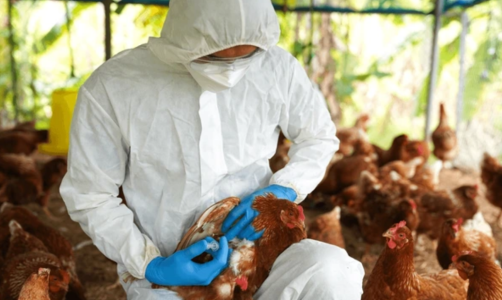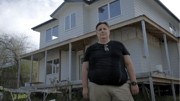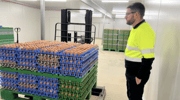Thirty thousand ducks killed with 'barbaric' substance! Are the actions of the Victorian government to blame?
By
- Replies 4
The recent culling of 30,000 farmed ducks in Victoria using firefighting foam has sparked a heated debate over animal welfare and the ethics of biosecurity measures. The ducks were destroyed as part of the state's response to a highly contagious strain of avian influenza, or bird flu, which emerged earlier this year at several poultry farms. This drastic action has drawn criticism from various quarters, including the Animal Justice party MP Georgie Purcell, who has condemned the method as 'nothing short of barbaric.'
The Victorian agriculture minister, Ros Spence, confirmed that Agriculture Victoria used Phos-Chek, a class-A foam, to contain the outbreak. Phos-Chek is globally recognised as an alternative to other firefighting foams that contain harmful per- and poly-fluoroalkyl substances (PFAS). Spence defended the use of the foam, stating it was 'PFAS-free' and 'approved for use in biosecurity emergencies' to ensure a 'rapid and humane method of depopulation.'
The minister also mentioned that the method was chosen based on site-specific factors, such as the facility's layout, and that the foam is designed to minimise the birds' stress and suffering during the process. She assured that animal welfare officers oversaw the culling. However, she did not address whether animal welfare and environmental impacts were considered before the foam's deployment.
The use of firefighting foam, or wet foam, for culling floor-raised poultry was approved in Australia in 2010, but the Australian Veterinary Association (AVA) does not prefer this method. Dr Melanie Latter, the AVA’s head of policy and veterinary science, explained that the foam either suffocates the birds or drowns them if it has too much water content. She highlighted the particularly distressing nature of this method for ducks due to their diving reflex, which can prolong their time to death.
Purcell described the use of foam as an 'abhorrent and prolonged slaughter method,' especially for ducks, as they tend to hold their breath when they see the foam, leading to a slow and agonizing death from heatstroke or organ failure. She expressed concern that authorities might be resorting to foam due to a CO2 shortage, which is typically used for culling.
In contrast, in Europe and Canada, birds are culled using inert gases like nitrogen, which are considered the 'most humane' as they render the animals unconscious before death. The RSPCA has also called for further research to develop more humane methods of managing biosecurity outbreaks and preventive measures such as vaccination.
The bird flu outbreak in Victoria, which affected eight poultry farms earlier this year, has not seen further cases since 24 June. Agriculture Victoria has lifted some measures around the Terang area, though a control order remains in place in Meredith. Victoria’s chief veterinary officer, Dr Graeme Cooke, stated that efforts to contain the bird flu were 'nearing its conclusion' and that it had been the state’s 'longest running biosecurity response.'
The Victorian government has culled over 1.3 million chickens and ducks in response to the outbreak and is reportedly 'undertaking enhanced preparedness planning' for future outbreaks. The Commonwealth is also conducting a tender process for the supply of CO2 for use during larger bird flu emergency responses.
The government's expenditure on managing the outbreak, as reported in the Department of Energy, Environment and Climate Action’s annual report 2023/24, amounted to $7.83 million, including contracts for poultry destruction, site cleaning, decontamination, and personal protective equipment.
 This incident raises critical questions about the balance between public health, biosecurity, and animal welfare. It also underscores the need for ongoing dialogue and investment in more humane and effective methods to manage such crises. As members of the Seniors Discount Club, we understand the importance of ethical treatment of animals and the complexities of managing public health emergencies. We invite you to share your thoughts and experiences on this delicate issue in the comments below. How do you believe such situations should be handled, and what measures can be taken to prevent similar occurrences in the future?
This incident raises critical questions about the balance between public health, biosecurity, and animal welfare. It also underscores the need for ongoing dialogue and investment in more humane and effective methods to manage such crises. As members of the Seniors Discount Club, we understand the importance of ethical treatment of animals and the complexities of managing public health emergencies. We invite you to share your thoughts and experiences on this delicate issue in the comments below. How do you believe such situations should be handled, and what measures can be taken to prevent similar occurrences in the future?
The Victorian agriculture minister, Ros Spence, confirmed that Agriculture Victoria used Phos-Chek, a class-A foam, to contain the outbreak. Phos-Chek is globally recognised as an alternative to other firefighting foams that contain harmful per- and poly-fluoroalkyl substances (PFAS). Spence defended the use of the foam, stating it was 'PFAS-free' and 'approved for use in biosecurity emergencies' to ensure a 'rapid and humane method of depopulation.'
The minister also mentioned that the method was chosen based on site-specific factors, such as the facility's layout, and that the foam is designed to minimise the birds' stress and suffering during the process. She assured that animal welfare officers oversaw the culling. However, she did not address whether animal welfare and environmental impacts were considered before the foam's deployment.
The use of firefighting foam, or wet foam, for culling floor-raised poultry was approved in Australia in 2010, but the Australian Veterinary Association (AVA) does not prefer this method. Dr Melanie Latter, the AVA’s head of policy and veterinary science, explained that the foam either suffocates the birds or drowns them if it has too much water content. She highlighted the particularly distressing nature of this method for ducks due to their diving reflex, which can prolong their time to death.
Purcell described the use of foam as an 'abhorrent and prolonged slaughter method,' especially for ducks, as they tend to hold their breath when they see the foam, leading to a slow and agonizing death from heatstroke or organ failure. She expressed concern that authorities might be resorting to foam due to a CO2 shortage, which is typically used for culling.
In contrast, in Europe and Canada, birds are culled using inert gases like nitrogen, which are considered the 'most humane' as they render the animals unconscious before death. The RSPCA has also called for further research to develop more humane methods of managing biosecurity outbreaks and preventive measures such as vaccination.
The bird flu outbreak in Victoria, which affected eight poultry farms earlier this year, has not seen further cases since 24 June. Agriculture Victoria has lifted some measures around the Terang area, though a control order remains in place in Meredith. Victoria’s chief veterinary officer, Dr Graeme Cooke, stated that efforts to contain the bird flu were 'nearing its conclusion' and that it had been the state’s 'longest running biosecurity response.'
The Victorian government has culled over 1.3 million chickens and ducks in response to the outbreak and is reportedly 'undertaking enhanced preparedness planning' for future outbreaks. The Commonwealth is also conducting a tender process for the supply of CO2 for use during larger bird flu emergency responses.
The government's expenditure on managing the outbreak, as reported in the Department of Energy, Environment and Climate Action’s annual report 2023/24, amounted to $7.83 million, including contracts for poultry destruction, site cleaning, decontamination, and personal protective equipment.
Key Takeaways
- The Victorian government has utilised firefighting foam to cull about 30,000 farmed ducks in response to an avian influenza outbreak.
- Animal Justice party MP Georgie Purcell criticised the culling method as 'barbaric,' while Agriculture Minister Ros Spence defended its use as 'rapid and humane.'
- The foam used, known as Phos-Chek, is PFAS-free and approved for biosecurity emergencies, yet concerns regarding animal welfare and potential environmental impacts have been raised.
- There is a call for the Australian government to investigate and invest in more humane culling methods, such as using inert gases, which are considered the most humane and are used in Europe and Canada.








